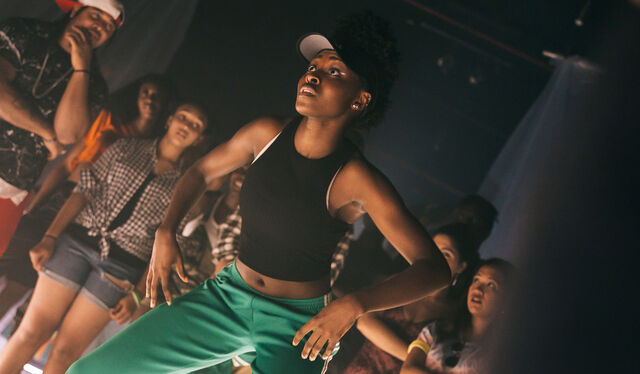The film’s triptych structure emerged after Msangi spent months grappling with how to create a feature-length screenplay out of her original short film. “Having just come off of the short, I was focusing on Walter’s story. But [I] didn’t think that was the most original story I could tell,” she says. “And then, out of indecision between whether I should make it Walter’s or Sylvia’s story, I decided to just do both. Initially it was two perspectives that I was looking at. But I realized that Esther’s story was really the linchpin for both of their stories, and it wouldn’t make sense not to have hers.”
Giving Walter, Esther and Sylvia their own chapters makes Farewell Amor a stronger film than if it had followed a singular, traditional protagonist. Extreme conservatism in one chapter is revealed as a desire to avoid pain in another; one character’s cramped living room is another’s space to dance freely. Writing on Letterboxd, Tabby points out how the three-part narrative structure grants meaningful subjectivity to characters who deserve it: “It’s so easy for Westernized perspectives to steamroll over films that deal in cultural disparities and thematics, but Farewell Amor takes important steps in showing all sides of the story,” she writes. “It was refreshing to see [the characters] each given the space to exist.”
This layering of voices happens in the camerawork, too. Each section of the narrative is marked with a visual language of its own, complete with specific color palettes and cinematographic techniques. Msangi thinks fondly about the work she put in with cinematographer Bruce Francis Cole to make the chapters distinct. “For Walter’s, it’s sort of a slow cinema, where there’s a lot of still framing. It’s almost like he’s stuck, you know? Stuck in the frame between two surfaces, two hard surfaces, a window frame, a door frame. And in Sylvia’s, we wanted to have it reflect her livelihood, her restlessness. All handheld cameras, all movement. And then for Esther, she’s very observant. She’s been taking everything in, almost in an investigative style, but also a little bit romantic. She’s romanticized this setup, so a lot of close shots, a lot of soft lighting.”








